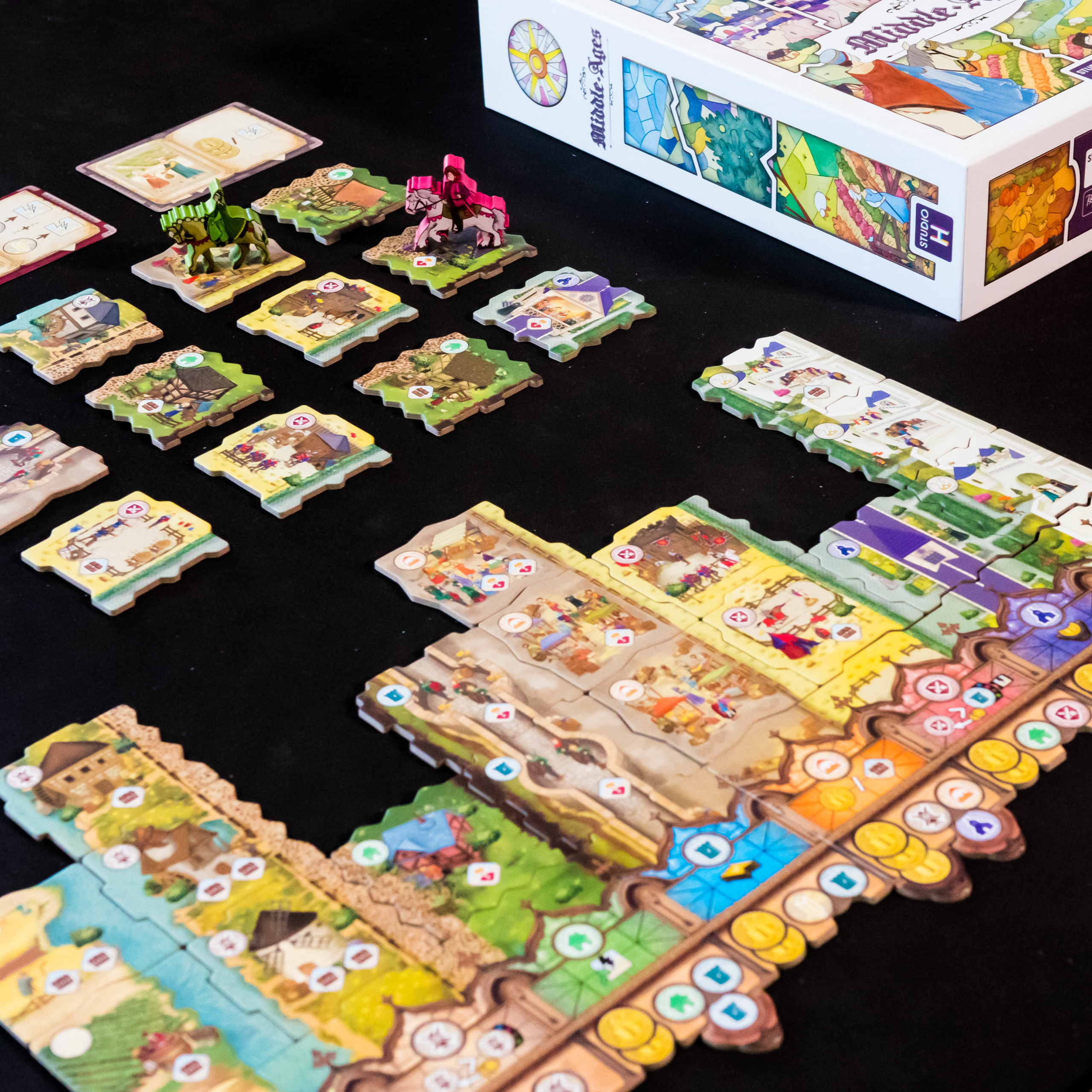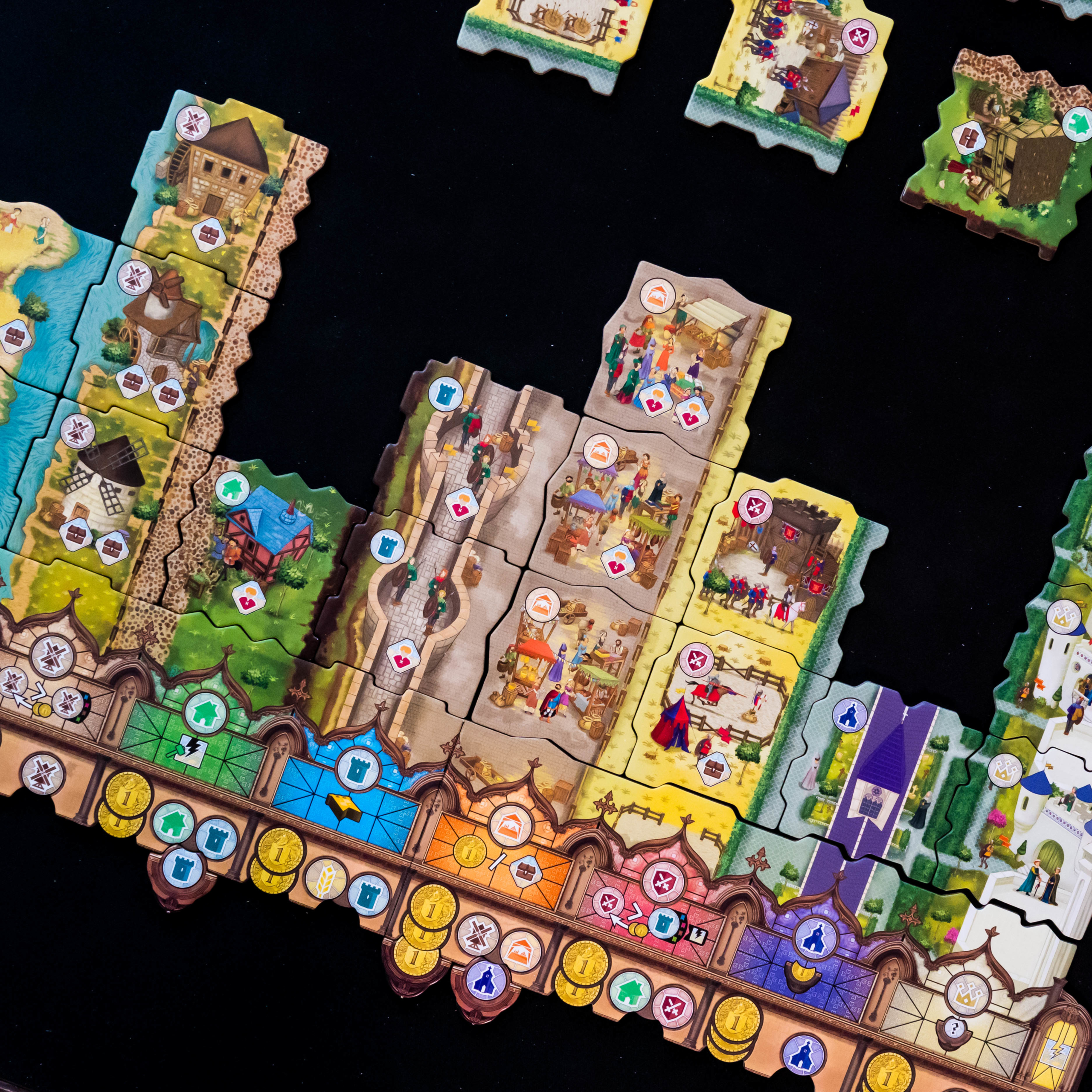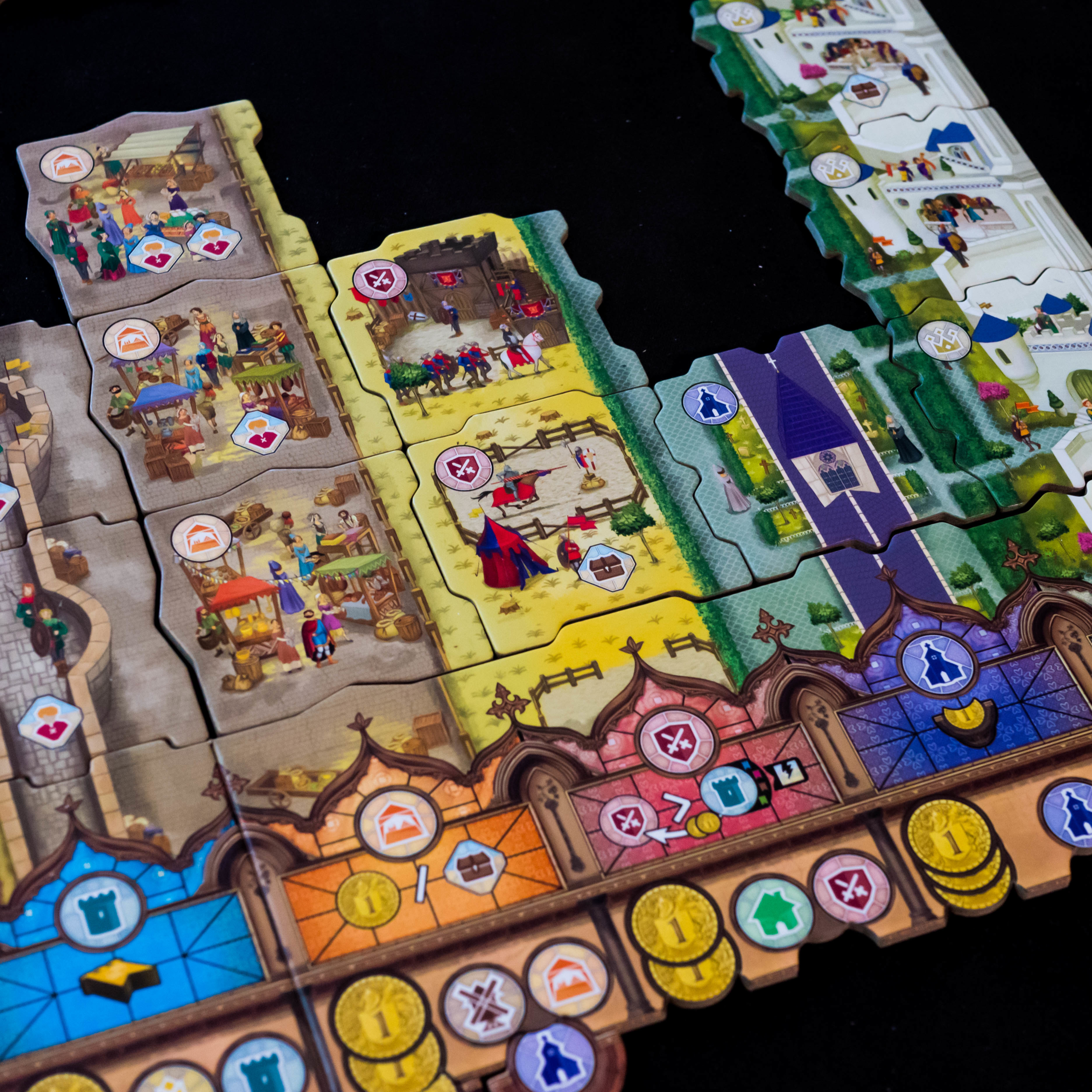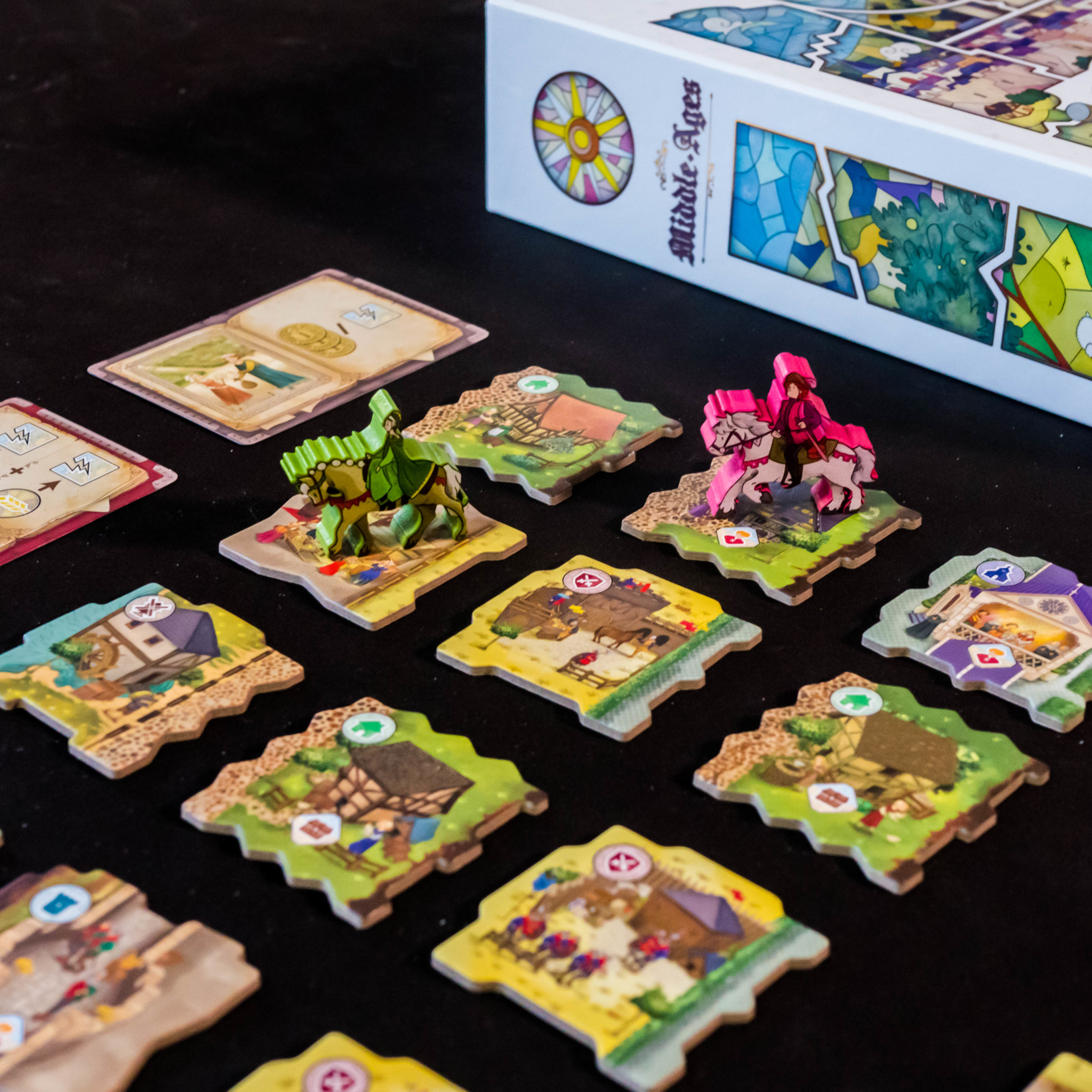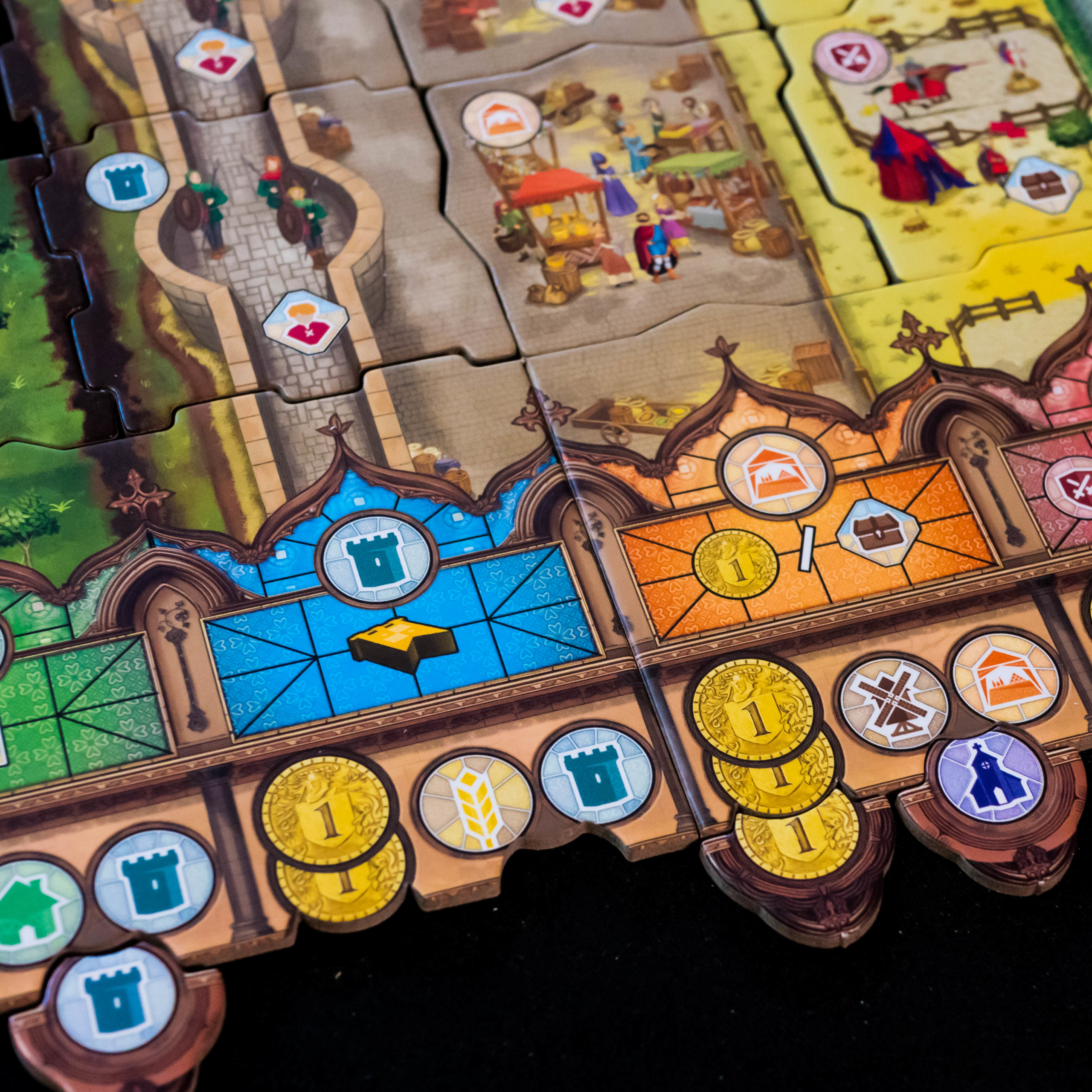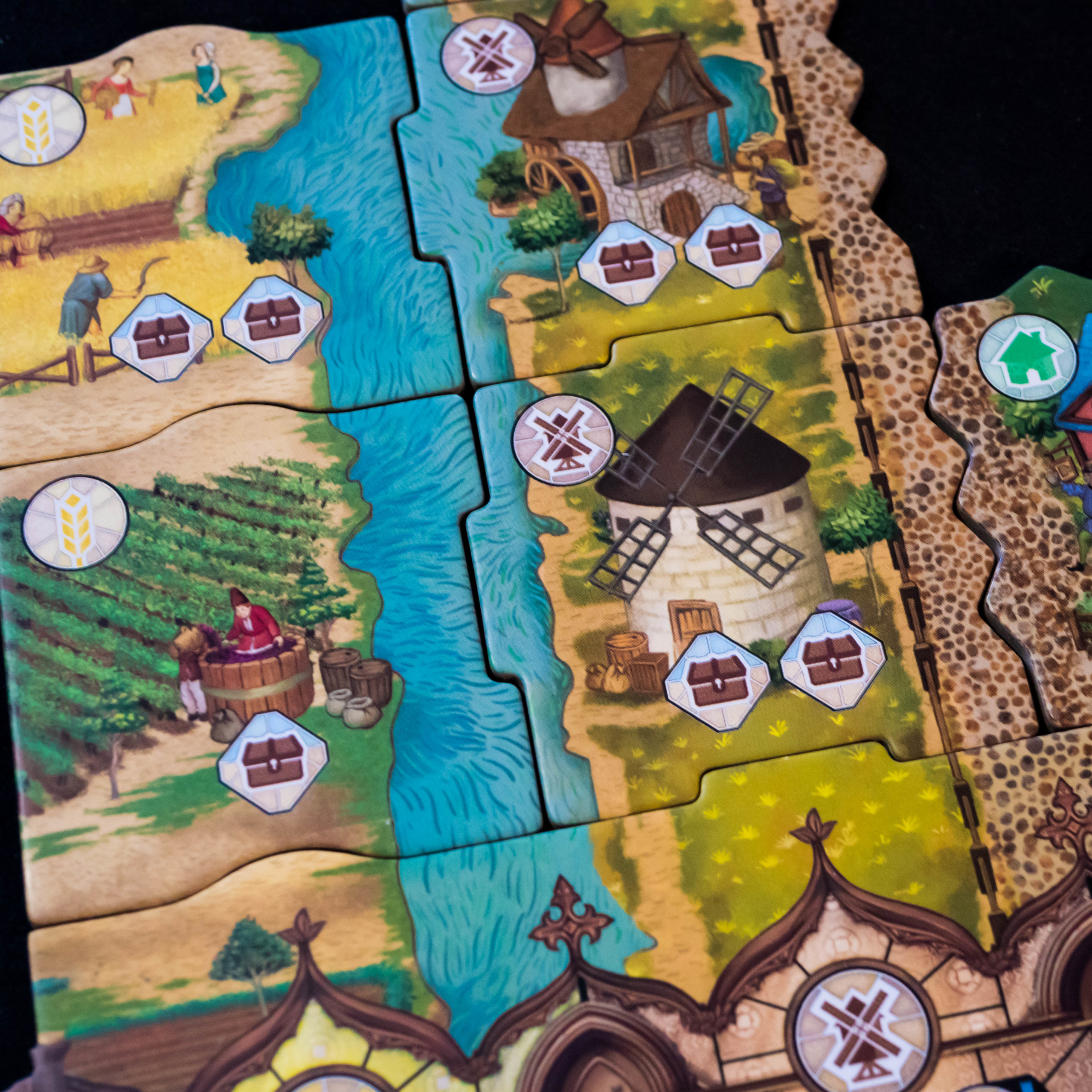Review Middle Ages
8.0Good
Middle Ages is an accessible and fun strategy game, perfect for discovering the mechanics of drafting and tile placement. It is an ideal family game for fans of light tactics, which offers a good balance between reflection, simplicity and interaction.
Positives
- Accessible game
- Tile draft mechanics
- Quality material
- Short games
Negatives
- May lack depth for experienced players
- Lack of originality
Breakdown
- Components and illustrations 10.0
- Mechanics 7.0
- Thematic 7.5
- Replayability 7.5
- Handling 10.0
- Interaction 9.0
- Originality 5.0


